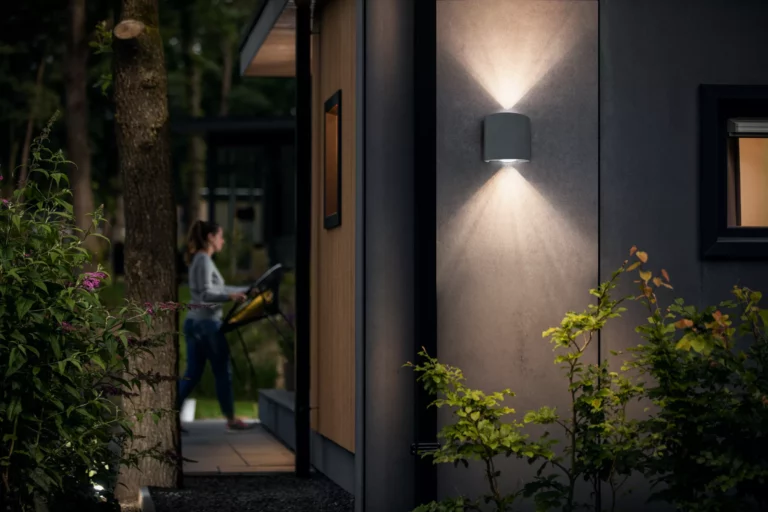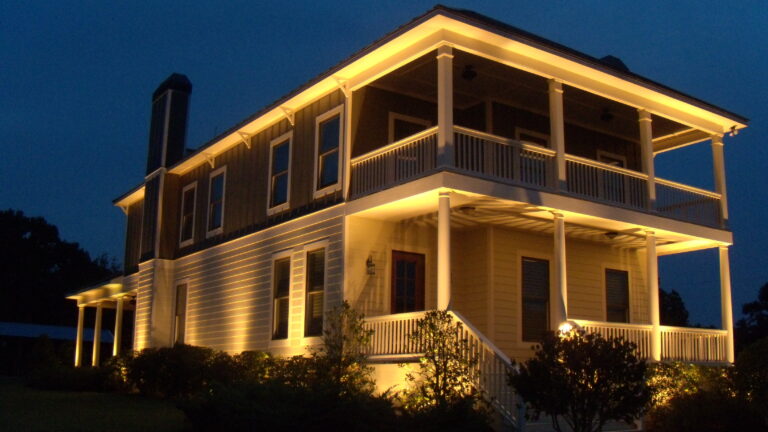Outdoor Electricians Near Me Your Guide
Outdoor electricians near me are crucial for safe and efficient installations. These professionals handle everything from residential lighting to commercial power systems, from illuminating pathways to powering outdoor appliances. Understanding their services, finding the right fit, and evaluating their qualifications are key to a successful project. This guide will walk you through the process, ensuring you make informed decisions.
This comprehensive guide covers everything from understanding the diverse services offered by outdoor electricians in various settings, like homes, businesses, and farms, to finding local professionals and evaluating their qualifications. We’ll explore essential safety procedures, discuss different types of outdoor electrical needs, and provide a practical approach to estimating costs and contracts. Detailed examples, including a sample residential lighting project and safety considerations, are included to make the information actionable and helpful.
Understanding Local Electricians
Outdoor electricians play a crucial role in maintaining and improving the safety and functionality of electrical systems in various environments. Their expertise extends beyond simply fixing a faulty outlet; it encompasses a wide range of services, tailored to the specific needs of residential, commercial, and agricultural properties. This section will explore the diverse services provided by outdoor electricians, their common safety procedures, and highlight key differences between their work in residential and commercial settings.
Local electricians possess a deep understanding of the unique challenges presented by outdoor electrical systems. They are trained to handle the specific demands of weather, environmental factors, and the different types of equipment used in various applications.
Typical Services Offered
Outdoor electricians provide a range of services for residential, commercial, and agricultural clients. Their expertise extends beyond basic repairs to encompass installation, maintenance, and upgrades.
- Residential: Common tasks include installing and maintaining outdoor lighting systems, rewiring patio covers, and troubleshooting issues with landscape lighting. They also address problems with outdoor outlets and electrical systems for swimming pools or spas.
- Commercial: Services may include installing and maintaining lighting systems for parking lots, upgrading electrical systems for new buildings, and ensuring proper grounding for large structures. They often work with security lighting and alarm systems, as well as specialized equipment used in retail or hospitality.
- Agricultural: Outdoor electricians in agricultural settings often handle specialized tasks, such as installing and maintaining electrical systems for barns, greenhouses, or livestock facilities. They might also be involved in the electrical infrastructure of farms, ensuring the reliable operation of irrigation systems or equipment.
Specific Outdoor Electrical Tasks
Outdoor electrical tasks demand meticulous attention to detail and adherence to safety protocols. These tasks vary depending on the property type and specific requirements.
- Installing outdoor lighting: This involves selecting appropriate fixtures, ensuring proper wiring, and adhering to local codes and regulations. Careful consideration must be given to light placement, energy efficiency, and the overall aesthetic appeal.
- Rewiring a patio cover: This often requires removing old wiring, running new cables, and installing new outlets or fixtures while complying with building codes. Ensuring proper grounding and insulation is crucial for safety.
- Maintaining landscape lighting: This includes checking for damaged fixtures, replacing burnt-out bulbs, and ensuring the system is operating efficiently and safely. Regular maintenance can prevent costly repairs and ensure the longevity of the lighting system.
Safety Procedures and Considerations
Safety is paramount in outdoor electrical work. Electricians must adhere to strict safety protocols to prevent accidents and comply with regulations.
Adherence to safety guidelines is crucial for both the electrician and the client.
- Proper use of tools and equipment: Electricians must use appropriate tools and equipment for outdoor electrical work, ensuring their safety and effectiveness. This includes using insulated tools, protective gear, and appropriate testing devices.
- Compliance with local codes and regulations: Electricians must comply with all local electrical codes and regulations, ensuring that their work meets safety standards and prevents hazards.
- Working with potentially hazardous conditions: Outdoor work can involve working in wet conditions, near water sources, or in extreme temperatures. Electricians must take precautions to mitigate potential risks.
Comparison of Residential and Commercial Services
The following table highlights the key differences in the services provided by residential and commercial outdoor electricians:
| Characteristic | Residential | Commercial |
|---|---|---|
| Scope of Work | Typically, smaller projects focus on individual properties or structures. | Larger projects encompass multiple structures and systems. |
| Complexity | Generally less complex, focusing on basic installations and repairs. | Potentially more complex, involving intricate systems and specialized equipment. |
| Codes and Regulations | Adherence to local codes for residential properties. | Compliance with commercial building codes and potentially specific industry standards. |
| Safety Protocols | Focus on safety precautions for individual properties. | Emphasis on safety protocols for larger-scale operations and multiple employees. |
Finding Electricians
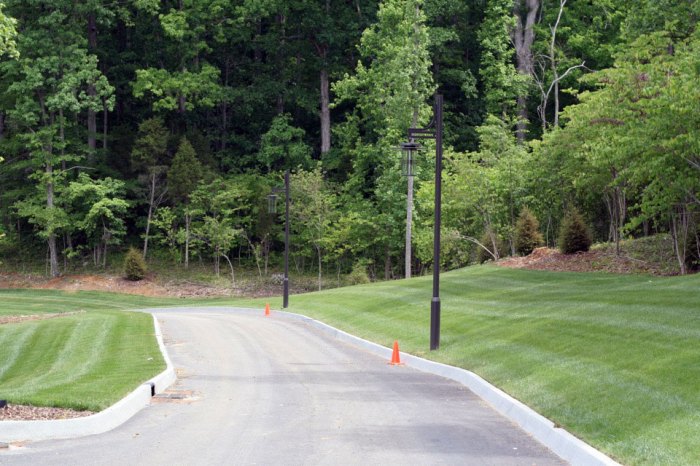
Source: thompsonelectricalservice.com
Locating qualified outdoor electricians is a crucial step in any electrical project. A careful and methodical approach ensures the job is completed safely and effectively, preventing potential hazards and ensuring the longevity of the work. Understanding the various methods for finding electricians can streamline the process and lead to a more satisfactory outcome.
Finding the right outdoor electrician often involves a combination of research, reviews, and personal recommendations. Thorough investigation and due diligence are key to ensuring you choose a reputable and skilled professional for your specific needs.
Methods for Locating Electricians, Outdoor electricians near me
Various methods are available for finding outdoor electricians. These range from traditional approaches to modern online resources. Careful consideration of each method can help narrow down the search and identify suitable candidates.
- Online Directories: Online directories and business listings are a valuable starting point. These platforms provide readily available information about local electricians, including contact details, service areas, and sometimes, even specialized certifications.
- Local Business Listings: Local business listings are another excellent source of information. These often include detailed profiles of local businesses, including electricians, and allow for easier filtering by specific location and services.
- Referrals from Trusted Sources: Referrals from friends, family, or colleagues can be highly effective. A trusted referral provides insight into the electrician’s work ethic, reliability, and quality of service, based on firsthand experience.
Importance of Checking Reviews and Testimonials
Thorough research into electricians often involves reviewing online reviews and testimonials. These insights offer a valuable perspective into the electrician’s past performance and provide a measure of their trustworthiness.
Checking reviews and testimonials allows you to assess an electrician’s professionalism, communication skills, and overall customer satisfaction. This crucial step helps filter out potential problems and ensures you choose a qualified professional. A high volume of positive reviews generally indicates a reliable and capable electrician.
Comparison of Methods
Different methods for locating outdoor electricians each have their strengths and weaknesses. Careful comparison and evaluation of these methods can lead to a more informed decision.
| Method | Strengths | Weaknesses |
|---|---|---|
| Online Directories | Wide reach, easily accessible information, often includes contact details and service areas. | Information may not always be current, potential for inaccurate listings. |
| Local Business Listings | Detailed business profiles, often more local focus, potentially include reviews. | May have less comprehensive information compared to online directories. |
| Referrals | Firsthand accounts, personal recommendations provide insight into work ethic. | Limited scope, may not cover all necessary information. |
Online Platforms for Finding Outdoor Electricians
Numerous online platforms can help locate qualified outdoor electricians. These platforms streamline the search process and provide access to a wider pool of potential candidates.
- Google My Business: A popular platform, providing detailed business profiles, including contact details, location, and customer reviews.
- Yelp: A well-known platform with user reviews, enabling a direct assessment of customer experiences.
- Angie’s List: Provides verified reviews and ratings, offering a degree of trust and reliability in the selection process.
- HomeAdvisor: An online platform dedicated to connecting homeowners with service providers, including electricians, featuring detailed profiles and customer reviews.
Evaluating Electricians
Choosing the right outdoor electrician is crucial for a successful and safe project. A qualified and experienced electrician can ensure the job is completed correctly, avoiding costly repairs and potential hazards. Understanding the criteria for evaluation allows you to make an informed decision and protect your investment.
Qualifications and Experience
Evaluating an electrician’s qualifications and experience involves a multi-faceted approach. Look for certifications that demonstrate specialized knowledge in outdoor electrical work, such as those related to specific types of equipment or techniques. Experience is also vital. A contractor with a proven track record of successful outdoor electrical projects provides greater assurance of competence and expertise. Consider the types of projects the electrician has undertaken, as this can offer valuable insight into their capabilities and potential suitability for your specific needs. A history of successful projects and satisfied customers provides a significant advantage.
Licensing and Insurance
Licensing and insurance are essential aspects of evaluating an electrician’s credibility. A valid electrical license signifies compliance with local regulations and standards. Verify that the license is current and active. Insurance coverage protects you in the event of accidents or damages during the project. Ensure the electrician carries adequate liability insurance to cover potential risks. This protects both you and the electrician in case of unforeseen circumstances. A licensed and insured electrician is a key indicator of professionalism and responsibility.
Certifications and Reputation
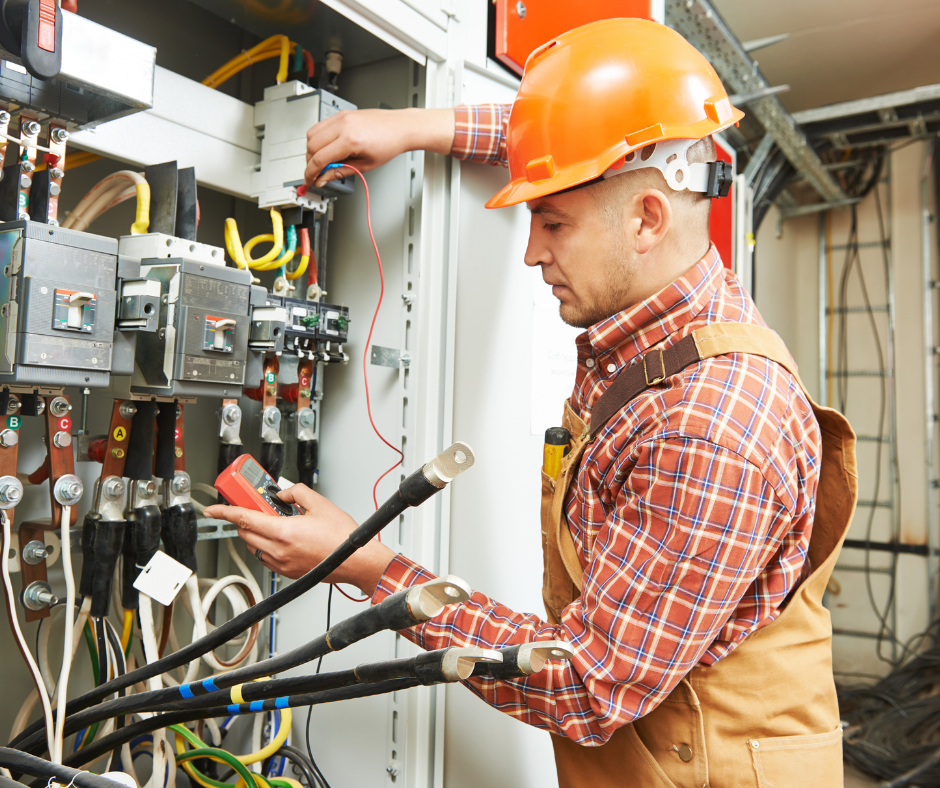
Electricians often hold various certifications that demonstrate specialized knowledge in specific areas. Look for certifications that are relevant to outdoor electrical work. Investigating the electrician’s reputation through online reviews or referrals can provide valuable insights into their work ethic, communication skills, and customer satisfaction. Positive feedback from previous clients is a strong indication of reliability and quality. Verify any certifications to ensure their validity.
Project Scope and Communication
Clear communication and a thorough understanding of the project scope are paramount. Discuss the project details thoroughly with potential electricians. This includes the specific tasks, materials required, and any potential challenges. Ensure a shared understanding of the project’s objectives and timeline. A clear and detailed agreement helps avoid misunderstandings and disputes later on.
Key Questions to Ask Prospective Electricians
| Question | Purpose |
|---|---|
| What is your experience with outdoor electrical installations? | Assessing their practical knowledge and experience. |
| Do you have any relevant certifications or licenses? | Evaluating their qualifications and adherence to regulations. |
| What is your insurance coverage? | Ensuring their financial responsibility. |
| Can you provide references from previous clients? | Verifying their reputation and quality of work. |
| What is your estimated timeframe for the project? | Assessing their efficiency and project management skills. |
| Can you provide a detailed quote outlining all costs and materials? | Ensuring transparency and preventing hidden costs. |
| How will you handle potential safety concerns during the installation? | Assessing their safety protocols and awareness. |
| How will you manage potential unforeseen circumstances during the project? | Evaluating their problem-solving skills and adaptability. |
Specific Outdoor Electrical Needs
Outdoor electrical work encompasses a wide range of applications, from simple lighting to complex security systems. Understanding the specific needs of each property type is crucial for ensuring a safe and effective installation. Proper planning and execution are essential for both residential and commercial projects.
Different properties have varying electrical needs, dictated by factors such as size, usage, and the desired level of functionality. Homes might require basic lighting and outlets, while businesses could need substantial power supplies for equipment and extensive lighting for visibility. Farms, in particular, often require specialized power solutions for agricultural equipment and potentially remote locations.
Common Outdoor Electrical Needs
Outdoor electrical systems serve a variety of purposes beyond basic lighting. Power outlets for tools, security systems for safety and deterrents, and sophisticated irrigation systems for maintaining lawns and gardens are common needs. These needs often intertwine; for example, a security system might use motion-sensing lights to enhance its effectiveness.
Outdoor Lighting Types and Applications
Outdoor lighting significantly impacts the aesthetic and safety of a property. Choosing the appropriate type of lighting is crucial for achieving the desired ambiance and functionality. Different types of outdoor lighting cater to various needs.
- Pathway Lighting: This type of lighting illuminates walkways and driveways, improving visibility and safety. It’s vital for guiding foot traffic and preventing accidents. Well-placed pathway lighting enhances the visual appeal of a property’s exterior.
- Security Lighting: This is crucial for deterring criminal activity and enhancing safety. Motion-activated sensors are common, providing illumination only when movement is detected. Bright, strategically placed lights are critical in deterring potential intruders.
- Accent Lighting: This type of lighting highlights specific architectural features, landscaping elements, or artwork. Accent lighting creates focal points and enhances the beauty of a property’s exterior. For instance, spotlights can highlight trees, sculptures, or decorative features.
Comparison of Outdoor Lighting Types
The table below summarizes the different types of outdoor lighting, highlighting their applications and key features.
| Lighting Type | Application | Key Features |
|---|---|---|
| Pathway | Illuminating walkways, driveways | Soft, diffused light for safety and guidance; typically low-intensity |
| Security | Deterrent for crime; enhances safety | Bright, adjustable intensity; often motion-activated; strategically placed |
| Accent | Highlighting architectural features, landscaping, or artwork | Directional, focused light; adjustable intensity; enhances visual appeal |
Safety Considerations
Outdoor electrical work presents unique safety challenges. Proper precautions are essential to prevent accidents and ensure the safety of workers and the public. Understanding the potential risks and adhering to safety protocols are paramount for successful and secure outdoor electrical installations.
Working with outdoor electrical systems requires a heightened awareness of potential hazards. Weather conditions, equipment malfunctions, and improper grounding procedures can lead to serious consequences. Diligence in assessing risks and implementing preventative measures is critical to maintaining a safe work environment.
Crucial Safety Measures
Adhering to safety regulations and best practices is crucial for preventing accidents. These include using appropriate personal protective equipment (PPE), maintaining a safe work zone, and adhering to established safety procedures. Workers must always be aware of the potential risks associated with outdoor electrical work and implement preventive measures.
- Use of PPE: Workers should wear appropriate safety gear, including insulated gloves, safety glasses, and rubber boots. These items provide a barrier against electrical shocks and protect against injuries caused by falling objects or other hazards.
- Safe Work Zone: Establishing a designated and secure work zone is critical. This involves isolating the work area, warning others of the danger, and ensuring adequate space for safe movement.
- Adherence to Safety Procedures: Strict adherence to established safety protocols, including lockout/tagout procedures for energized equipment, is essential. This prevents accidental contact with energized parts and reduces the risk of electrical shocks.
Risks Associated with Outdoor Electrical Hazards
Understanding the risks associated with outdoor electrical hazards is crucial for preventative measures. These hazards often stem from weather conditions and equipment failure.
- Weather Conditions: Extreme weather events, such as storms, rain, and high winds, can disrupt outdoor electrical systems. These conditions can cause equipment damage, posing risks to workers and the public. For example, a strong windstorm can knock down power lines, exposing workers to live wires. Lightning strikes are also a significant concern, potentially leading to electrical shocks and fires.
- Equipment Failure: Equipment malfunctions, such as damaged insulation or faulty wiring, can lead to electrical shorts and shocks. Regular maintenance and inspections are vital to prevent equipment failures. For instance, a frayed wire on a transformer can lead to a dangerous electrical arc.
Importance of Proper Grounding and Electrical Safety Codes
Proper grounding and adherence to electrical safety codes are critical for preventing accidents and ensuring the safety of outdoor installations. Grounding systems provide a path for excess electrical current to flow safely into the earth, reducing the risk of electric shocks.
- Grounding Procedures: Proper grounding systems must be implemented for all outdoor electrical installations. This involves connecting electrical equipment to a ground rod, ensuring a low-resistance path to the earth. This prevents the buildup of dangerous voltages.
- Electrical Safety Codes: Adhering to national electrical codes (NEC) and local regulations is mandatory for outdoor electrical installations. These codes Artikel safe practices and requirements for materials, installation methods, and safety measures. Non-compliance can lead to serious safety violations and potentially dangerous situations.
Emergency Procedures
Having a clear emergency plan in place is crucial for handling unexpected events and minimizing harm.
- Emergency Contact Information: Maintain a list of emergency contact numbers, including the local fire department, emergency medical services, and electrical utility company representatives. These contacts should be readily available to respond to emergencies quickly.
- Emergency Response Procedures: Establish a protocol for responding to electrical issues or accidents. This includes procedures for shutting off power, providing first aid, and contacting emergency services. A well-defined procedure helps in minimizing the severity of the incident and ensuring the safety of those involved.
Estimating Costs and Contracts: Outdoor Electricians Near Me
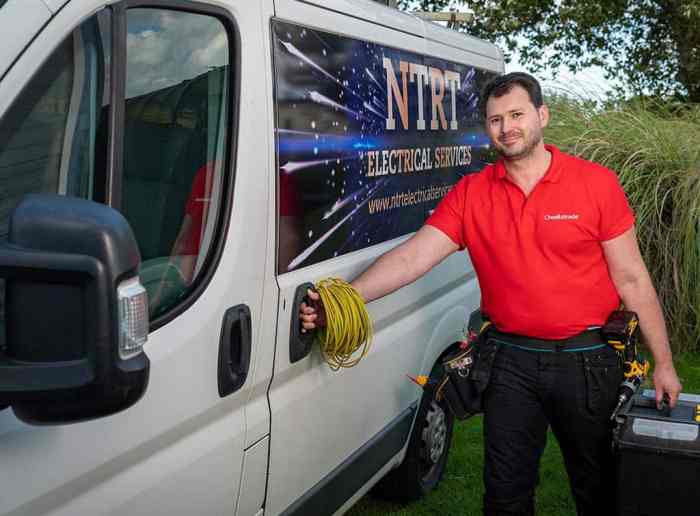
Source: checkatrade.com
Getting accurate cost estimates and a clear contract are crucial for any outdoor electrical project. Understanding the factors influencing pricing and the terms of the agreement protects both you and the electrician. This ensures a smooth and successful installation.
Methods for Estimating Costs
A reliable cost estimate considers several elements. Electricians typically base estimates on factors like the complexity of the project, materials required, labor hours, and permits. Gathering detailed information about your specific needs helps electricians create accurate estimates. Detailed plans and specifications are critical for precise pricing. You can request preliminary estimates based on preliminary information. However, a more precise estimate requires detailed plans, specifications, and site assessments.
Importance of Detailed Quotes
Obtaining multiple detailed quotes from different electricians is essential. Comparing quotes helps you understand the price range for similar work. Detailed quotes provide transparency, clarity, and a clear picture of the costs involved. They article specific materials, labor costs, and any potential hidden fees. A thorough review of each quote allows you to make an informed decision based on value and reliability.
Structure of a Contract for Outdoor Electrical Work

A well-structured contract is vital for legal protection and clear expectations. It should include a detailed description of the work, agreed-upon timelines, payment terms, and dispute resolution procedures. A clear article of responsibilities for both parties, and the process for handling unforeseen circumstances, is essential. The contract should specify the warranty for the work performed.
Factors Influencing Outdoor Electrical Installation Costs
- Project Complexity: Simple installations, like adding a light fixture, cost less than complex projects like installing a whole new electrical system for a large outdoor structure. For example, rewiring a gazebo’s electrical system is significantly more involved than replacing a single outdoor light.
- Materials Used: The type and quality of materials directly affect the price. Using higher-grade copper wire or specialized outdoor-rated equipment will typically increase the cost.
- Labor Hours: The electrician’s hourly rate, along with the total hours needed for the project, significantly impacts the overall cost. For example, a project requiring extensive trenching or specialized equipment will take more time and cost more.
- Permitting Requirements: Local permitting costs can vary significantly depending on the project’s scope. Some jurisdictions require specific permits for outdoor installations, which adds to the total project cost.
- Site Conditions: Difficult access, challenging terrain, or the need for specialized equipment to handle existing infrastructure or unique site conditions will increase the project cost. An example is installing lighting in a hard-to-reach area or encountering unforeseen underground utilities.
- Specific Needs: Custom features or unique specifications (such as specific voltage requirements or custom lighting designs) add to the project’s complexity and cost. For example, a sophisticated irrigation system requiring specialized controls would influence the overall cost.
| Factor | Description | Impact on Cost |
|---|---|---|
| Project Complexity | Level of difficulty in the work | Higher complexity, higher cost |
| Materials | Type and quality of materials used | Higher quality, higher cost |
| Labor Hours | Time required for the installation | More hours, higher cost |
| Permitting | Local regulations and costs | Permits required, added cost |
| Site Conditions | Terrain, access, and existing infrastructure | Difficult conditions, higher cost |
| Specific Needs | Custom features and specifications | Unique needs, higher cost |
Illustrative Examples
Illustrative examples of outdoor electrical projects help visualize the scope, materials, and costs involved. These examples demonstrate the diverse applications of outdoor electrical work, from simple residential lighting to complex commercial systems. Understanding these examples aids in effective communication between clients and electricians.
Residential Outdoor Lighting Project
Residential outdoor lighting projects often involve illuminating pathways, patios, and gardens. A typical project might include LED pathway lights, a motion-sensing security light, and a landscape accent light.
- Materials: LED pathway lights (3-4 units), a motion-sensor security light, a landscape accent light, wire, conduit, junction boxes, and necessary mounting hardware.
- Labor: Installation of the lights, including digging trenches for wiring, mounting the fixtures, and connecting them to the electrical system.
- Estimated Costs: A project of this type could range from $500 to $1,500, depending on the number of lights, complexity of installation, and labor costs in the specific location. Factors like permitting and specialized labor for difficult terrain will increase the cost.
Properly Installed Outdoor Electrical Outlet
A properly installed outdoor electrical outlet features robust safety features to protect against electrical hazards.
Imagine a metal electrical outlet box, securely mounted to a weatherproof enclosure on an exterior wall. The outlet itself should have a grounded three-pronged plug, and the entire installation should be protected by a dedicated circuit breaker in the electrical panel. The wiring should be appropriately sized and securely connected. The box should be sealed to prevent water and debris from entering.
Crucially, the outlet should be installed according to local electrical codes and regulations.
Commercial Outdoor Electrical System
A commercial outdoor electrical system requires careful planning and consideration of various components to meet the specific needs of the business.
| Component | Description |
|---|---|
| Power Source | A dedicated electrical service from the utility company, possibly including a transformer for voltage reduction. |
| Distribution Panel | A weatherproof electrical panel for distributing power to various outlets and equipment. |
| Lighting Fixtures | High-intensity LED lights, potentially with motion sensors or timers for energy efficiency and security. |
| Electrical Outlets | Heavy-duty outdoor receptacles for powering equipment, with appropriate grounding. |
| Wiring | Underground or above-ground wiring, designed for outdoor conditions, including conduit for protection. |
Example Outdoor Electrical Work Contract
A well-structured contract for outdoor electrical work clearly defines the scope of work, payment terms, and responsibilities of both parties.
A contract should include a detailed description of the project, including specific materials, labor, and the expected timeframe. It should also specify the payment schedule, including any deposits, progress payments, and the final payment amount. Furthermore, it must clearly Artikel the responsibilities of the electrician, including warranty information, liability, and dispute resolution procedures.
Summary
In conclusion, finding the right outdoor electrician near you involves a careful approach. This guide has equipped you with the knowledge to navigate the process effectively, from identifying local experts to evaluating their qualifications and understanding project specifics. By understanding the services, safety procedures, and cost factors, you can confidently choose the best electrician for your needs and ensure a safe and successful outdoor electrical project. Remember to prioritize safety, communication, and thorough evaluation throughout the process.



